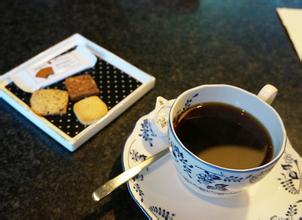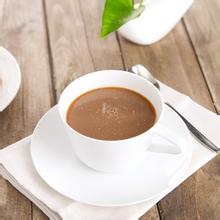Good mellow natural washing coffee washing processing method step by step processing method
1 Skin/Pulp: the outermost layer of the coffee bean is covered with berry-like skin and pulp. In addition to the natural sun method, coffee beans treated by other methods must remove the skin and flesh within a few hours after picking. Similar to the cherries we often eat, the difference is that when we eat cherries, we mainly eat the pulp and peel of berries. For coffee, peel and pulp are important by-products. In some places, people use the peel and pulp of coffee to make tea. People in the industry used to call the peel and pulp of coffee "Pulp". The machine used to remove the pulp is called the "desizing machine".
Mucous membrane (Mucilage): under the peel and pulp, a layer of sticky mucus tightly wraps the coffee beans. Because this mucous membrane is extremely sticky and high in sugar, it is used to call it "Honey". Not only coffee, but also many fruits have a layer of mucus inside. You can check the relevant information at http://en.wikipedia.org/wiki/Mucilage.
Parchment (Parchment): inside the mucous membrane, a thin film of cellulose wraps the coffee beans. After drying, the film looks like parchment, hence the name
Washed coffee accounts for 35% of exports. Good quality washed coffee is processed with freshly picked fully ripe fruit, picked carefully and closely monitored by professionals. The picked clean coffee beans are pulped on the day of picking, then fermented, washed, dried and peeled. The humidity of processed coffee beans is kept at about 12%. The washing rule has a good mellow taste, a high aroma and a lively sour taste.
Sun-cured coffee accounts for 65% of exports. Mainly picked by families, red coffee beans are placed on cement floors or on high tables to dry to about 11.5% humidity, then peeled and cleaned. Sun-dried beans have a complete natural mellow flavor, gentle aroma and more gum.
At present, most coffee producing countries are gradually inclined to the water washing refining method, while the non-washing producing countries adopt the natural drying method according to their geographical environment and production needs. However, the non-washing refining method is regarded as the transitional method of the washing refining method. It is even considered that this is a production mode with a difference of one grade from the washing refining method. This is unfair and incorrect.
Washed coffee is highly appraised by Europe and the United States and other places, mostly because its impurities and defective beans are less, the appearance of beans is more competitive, we are misled that "washing is delicious", but the appearance is not equal to the inside! Washed coffee and non-washed coffee have their own advantages and disadvantages.
Some laymen will think that the mocha Matali coffee beans in Yemen look small and have a high percentage of defective beans, more than 40% of which are impurities and defective beans, but they do not know that the acidity of his unique wine can not be replaced by other coffee. Therefore, it can be concluded that there is no absolute relationship between the quality of coffee beans and the refining method.

Important Notice :
前街咖啡 FrontStreet Coffee has moved to new addredd:
FrontStreet Coffee Address: 315,Donghua East Road,GuangZhou
Tel:020 38364473
- Prev

Effect of semi-washing on coffee flavor Introduction of washing and solarization flavor wheel treatment
Coffee processing method to remove pectin: take out coffee beans, do not need to take the sun, do not need to pour into the sink fermentation, but directly into the pectin scraper next to the machine, only a small amount of water can be mechanically scraped to remove the sticky pectin crumbs. Exposure: then take out the smooth surface of the raw beans, get outdoor exposure, until the moisture content dropped to 12% can be put into the warehouse 1, bean selection: the harvested fruit into
- Next

The Flavor description characteristics of Yega Snow Flavor introduction of Fine Coffee beans by Taste treatment method
Yega Chuefei flavor G1 is the highest grade, generally more common are water washing G2 and sun G3, I prefer sun-washed Yega Chefe, which gives people a clear feeling, while the sun makes people feel more mellow and full-bodied, just like bathing in a sea of flowers. The sun-tanned G4Jing G5 is usually sold as Sidamo, one of the three major coffee producing areas in Egypt, yeah.
Related
- What is the meaning of lactic acid fermentation with coffee bean treatment?
- How to judge the state of foam by sound?
- How does the latte pull out the unicorn pattern? Come to get for a little trick to improve the flower pull!
- Will flower pulling affect the taste of the latte?
- Do you know the history of coffee?
- The difference between honey treatment and sun washing what is raisin honey treatment?
- What kind of milk can a novice use to make coffee foam to keep the foam longer? The correct method and skills of milking tutorial sharing
- Why do washed coffee beans taste sour? Flavor characteristics of washed Coffee
- Introduction to the skill of how to practice the size and height of water injection around the circle of hand-brewed coffee
- How do beginners practice coffee flower drawing from scratch?

